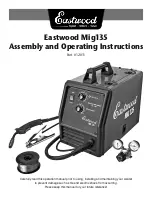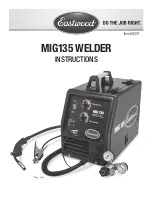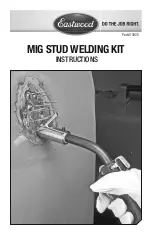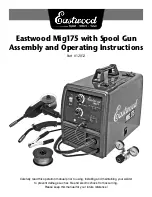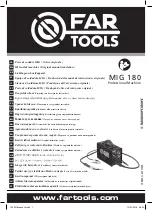
53
TROUBLESHOOTING, FAULTS AND MAINTENANCE
Whenever the protective window is "dirty" the laser power output is reduced.Therefore, when there is a
significant concentration of metal spatter on its surface, the glass should be replaced.
Check the microscope lens protective window located inside the welding chamber at regular intervals. This
special anti-reflective @ 1,064 nm glass is secured to the output of the optical path by means of an aluminium
ring nut, which is, in turn, held in place by a screw.
To replace the special protective window, proceed as follows:
• Unscrew the ring nut retaining screw (Ref. A – figure 56);
• Remove the ring nut (Ref. B - Figure 56) from the optical body and then remove the window.
• Wipe the surface with a soft, non-abrasive cloth.
• Do not attempt to remove any metal spatter that may have been deposited.
• Insert the new window (figure 57) in its housing and carefully position the ring nut, tightening it using the
two screws (figure 58).
REPLACING THE AR/AR SAFETY WINDOW
Figure 57
Figure 58
Figure 56
ATTENTION: It is advisable to replace the protective window in the presence of metallic spatter
since the impulses generated by the LASER could cause it to overheat further and may even
cause the glass itself to break.
ALIGNING THE CROSSHAIRS
It may be that the welding crosshairs is not aligned with the actual firing point. This may occur whenever the
welding machine is moved or raised.
Even a microscopic bump could result in a misalignment between the rosshairs and the actual firing point.
Such minor optical defects may be corrected quite easily by the operator.
To adjust the alignment of the crosshairs it is necessary to loosen the two screws on the upper part of focal
extension (Ref. A and B - Figure 59). Once the screws are loosened, pull out the extension by about 40mm
so it is possible to access the three crosshairs regulator screws (figure 60). Once the sight has been adjusted,
return everything to its original position.
However, before adjusting these screws, it is advisable to secure both the stereo-microscope and the binocular
firmly in their respective positions. To adjust the latter, simply slide the eyepieces on their support tubes as
far as they will go and rotate them until their dioptric positions coinicide with the 0 marker; then tighten the
eyecups around the ends of the eyepieces.
Figure 60
Figure 59
Summary of Contents for 4910880
Page 1: ......
Page 4: ......
Page 6: ...SAFETY ...
Page 18: ...INTRODUCTION ...
Page 24: ...INSTALLATION ...
Page 40: ...SETTING THE MACHINE PARAMETERS ...
Page 44: ...WELDING WITH THE ENESKAlaser 1500 mobile ...
Page 48: ...TROUBLESHOOTING FAULT MAINTENANCE ...
Page 60: ...GENERAL SAFETY REQUIREMENTS DURING WELDING ...
Page 65: ...NOTE ...
Page 66: ...NOTE ...
Page 67: ...NOTE ...

































